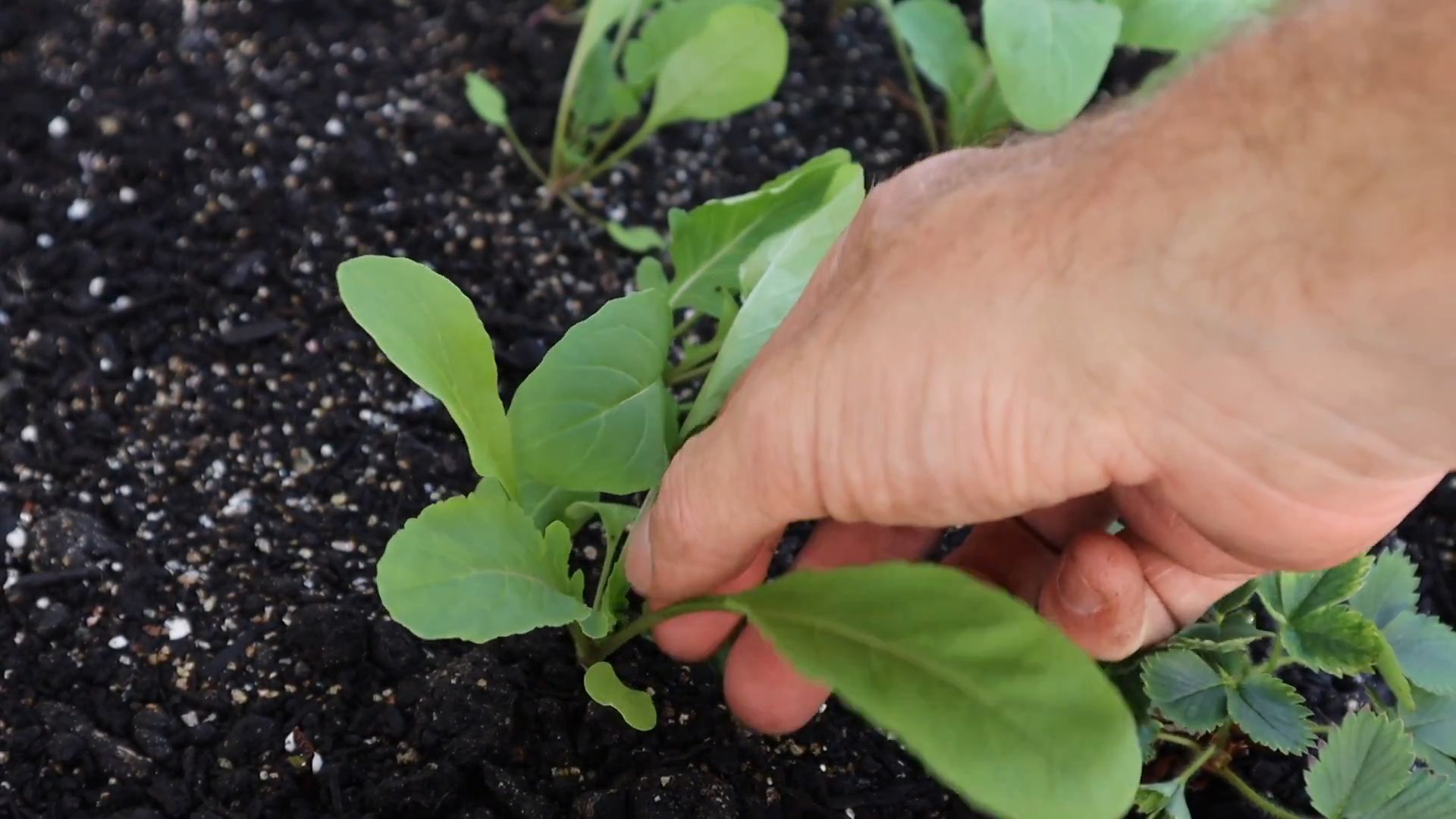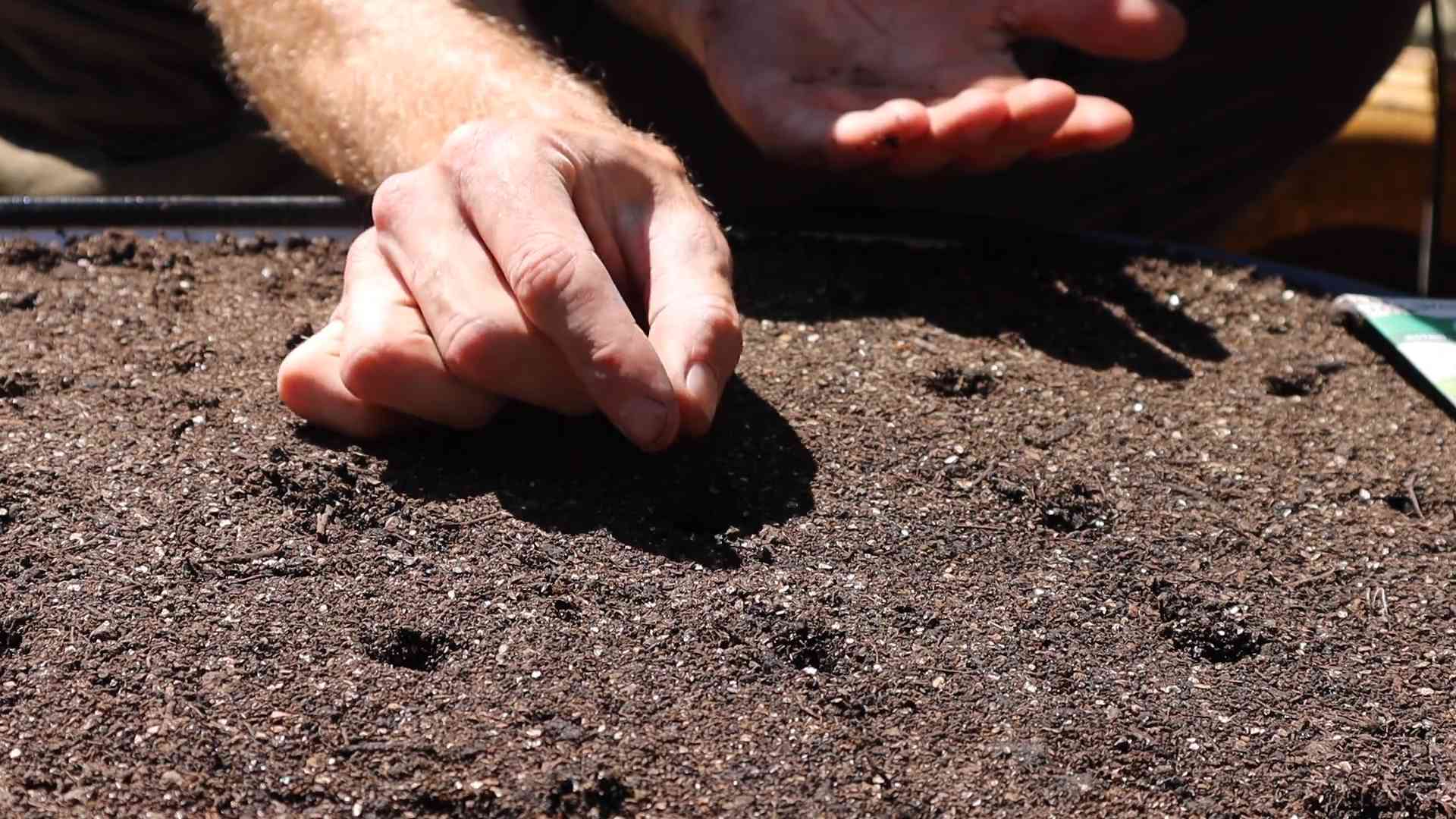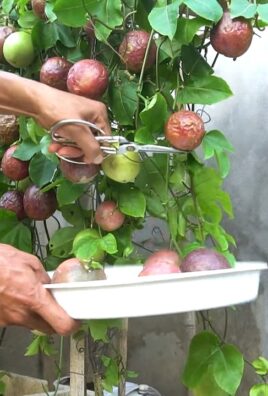Grow Arugula Indoors? Absolutely! Imagine fresh, peppery arugula gracing your salads, pizzas, and sandwiches, even when the snow is falling outside. Forget those sad, wilted greens from the grocery store – with a few simple tricks, you can cultivate your own thriving arugula patch right on your windowsill.
For centuries, cultivating herbs and vegetables indoors has been a way for people to connect with nature and ensure a fresh food supply, regardless of the season. From ancient Roman greenhouses to modern-day urban gardens, the desire to nurture life indoors has always been strong. Now, you can join this tradition with this easy DIY guide!
Let’s face it, buying fresh produce can be expensive, and sometimes the quality just isn’t there. Plus, knowing exactly where your food comes from is incredibly satisfying. That’s why learning how to grow arugula indoors is such a game-changer. I’m going to show you how to bypass the grocery store and enjoy delicious, homegrown arugula all year round. This DIY project is perfect for beginners, requiring minimal space and effort. Get ready to unleash your inner gardener and enjoy the fresh, peppery taste of homegrown arugula!

Grow Your Own Arugula Indoors: A Spicy Salad Garden at Your Fingertips!
Hey there, fellow plant enthusiasts! Are you craving that peppery, zesty arugula flavor but don’t have a garden or the weather isn’t cooperating? No problem! I’m going to walk you through how to grow your own delicious arugula indoors. It’s easier than you think, and you’ll be enjoying fresh salads in no time.
What You’ll Need
Before we dive in, let’s gather our supplies. Here’s a checklist of everything you’ll need to create your indoor arugula oasis:
* **Arugula Seeds:** Choose a variety that you like. I personally prefer ‘Astro’ for its quick growth and robust flavor.
* **Containers:** You can use pots, window boxes, or even recycled containers like yogurt cups or plastic tubs. Just make sure they have drainage holes! Aim for containers that are at least 6 inches deep.
* **Potting Mix:** Use a high-quality, well-draining potting mix. Avoid using garden soil, as it can compact and not drain well in containers.
* **Grow Lights (Optional but Recommended):** While arugula can grow near a sunny window, grow lights will provide consistent and optimal light, especially during the darker months. I use LED grow lights, as they are energy-efficient and don’t produce too much heat.
* **Watering Can or Spray Bottle:** For gentle watering.
* **Spray Bottle (for Misting):** To maintain humidity, especially when the seedlings are young.
* **Small Shovel or Trowel:** For planting the seeds.
* **Plant Labels (Optional):** To keep track of what you’re growing, especially if you’re planting other herbs or greens.
Getting Started: Planting Your Arugula Seeds
Okay, let’s get our hands dirty! This is the fun part.
1. **Prepare Your Containers:** Fill your chosen containers with potting mix, leaving about an inch of space at the top. Gently pat down the soil to remove any large air pockets.
2. **Sow the Seeds:** Arugula seeds are small, so you don’t need to plant them too deep. Sprinkle the seeds evenly over the surface of the soil. I usually aim for about 10-15 seeds per container, depending on the size.
3. **Cover the Seeds:** Lightly cover the seeds with a thin layer of potting mix, about 1/4 inch deep.
4. **Water Gently:** Use a watering can or spray bottle to gently water the soil. You want to moisten the soil without disturbing the seeds.
5. **Provide Light:** Place your containers in a location that receives at least 6 hours of sunlight per day. If you’re using grow lights, position them about 6-12 inches above the soil surface. I usually keep my grow lights on for 14-16 hours a day.
6. **Maintain Humidity:** Cover the containers with a plastic bag or clear plastic wrap to create a mini-greenhouse effect. This will help to maintain humidity and promote germination. Remove the cover once the seedlings emerge.
Nurturing Your Arugula: Care and Maintenance
Now that your arugula seeds are planted, it’s time to provide them with the care they need to thrive.
1. **Watering:** Keep the soil consistently moist, but not soggy. Water when the top inch of soil feels dry to the touch. Avoid overwatering, as this can lead to root rot. I usually water every 2-3 days, depending on the temperature and humidity.
2. **Thinning:** Once the seedlings have emerged and have a few true leaves (the second set of leaves), you’ll need to thin them out. This will give the remaining plants enough space to grow. Snip off the weaker seedlings at the soil line, leaving about 2-3 inches between plants. Don’t feel bad about thinning! It’s necessary for healthy growth.
3. **Fertilizing:** Arugula doesn’t need a lot of fertilizer, but a light feeding every few weeks can help to boost growth. Use a balanced liquid fertilizer diluted to half strength. I like to use fish emulsion or seaweed extract.
4. **Light:** Ensure your arugula plants receive adequate light. If you’re using natural light, rotate the containers regularly to ensure even growth. If you’re using grow lights, adjust the height as the plants grow to maintain the optimal distance.
5. **Temperature:** Arugula prefers cooler temperatures, ideally between 60-70°F (15-21°C). Avoid placing your plants near heat sources, such as radiators or vents.
6. **Air Circulation:** Good air circulation is important to prevent fungal diseases. Make sure your plants have enough space between them and that there’s adequate ventilation in the room.
Harvesting Your Arugula: Enjoying the Fruits (or Leaves!) of Your Labor
This is the moment you’ve been waiting for! Harvesting your own homegrown arugula is incredibly rewarding.
1. **When to Harvest:** You can start harvesting arugula leaves when they are about 2-3 inches long. The younger leaves will have a milder flavor, while the older leaves will be more peppery.
2. **How to Harvest:** Use scissors or your fingers to snip off the outer leaves, leaving the inner leaves to continue growing. This is called “cut and come again” harvesting, and it allows you to harvest multiple times from the same plant.
3. **Harvest Regularly:** Harvesting regularly will encourage the plants to produce more leaves. Don’t let the plants get too tall and leggy, as this can make the leaves bitter.
4. **Storage:** Freshly harvested arugula is best used immediately. However, you can store it in the refrigerator for a few days. Wrap the leaves in a damp paper towel and place them in a plastic bag or container.
Troubleshooting: Common Arugula Problems and Solutions
Even with the best care, you might encounter a few problems along the way. Here are some common issues and how to address them:
* **Leggy Plants:** This usually indicates insufficient light. Move your plants to a sunnier location or provide supplemental light with grow lights.
* **Yellowing Leaves:** This could be caused by overwatering, underwatering, or nutrient deficiencies. Check the soil moisture and adjust your watering schedule accordingly. If the problem persists, try fertilizing with a balanced liquid fertilizer.
* **Pests:** Arugula is generally pest-resistant, but you might occasionally encounter aphids or flea beetles. Wash the leaves with a strong stream of water or use an insecticidal soap.
* **Bolting:** Bolting occurs when the plants start to flower, which can make the leaves bitter. This is usually caused by hot weather or stress. To prevent bolting, keep the plants well-watered and provide shade during the hottest part of the day. Harvest regularly to encourage leaf production.
Extending Your Harvest: Succession Planting
To enjoy a continuous supply of fresh arugula, consider succession planting. This involves planting new seeds every few weeks. This way, you’ll always have a new batch of arugula ready to harvest.
1. **Plan Your Planting Schedule:** Determine how much arugula you want to harvest each week and plan your planting schedule accordingly.
2. **Start New Seeds:** Every 2-3 weeks, sow a new batch of arugula seeds in fresh potting mix.
3. **Transplant Seedlings (Optional):** If you started your seeds in small containers, you can transplant the seedlings to larger containers once they have a few true leaves.
Creative Uses for Your Homegrown Arugula
Now that you have a bounty of fresh arugula, it’s time to get creative in the kitchen! Here are some of my favorite ways to use homegrown arugula:
* **Salads:** Arugula is a classic salad green. Toss it with olive oil, lemon juice, and Parmesan cheese for a simple and delicious salad.
* **Pesto:** Arugula pesto is a flavorful twist on traditional basil pesto.
* **Pizza Topping:** Add fresh arugula to your pizza after it comes out of the oven for a peppery kick.
* **Sandwiches and Wraps:** Arugula adds a zesty flavor to sandwiches and wraps.
* **Soups and Stews:** Stir in a handful of arugula at the end of cooking for a burst of flavor and nutrients.
* **Smoothies:** Add a handful of arugula to your smoothies for a healthy and nutritious boost.
Final Thoughts
Growing arugula indoors is a simple and rewarding way to enjoy fresh, flavorful greens year-round. With a little bit of care and attention, you can have a thriving indoor arugula garden that provides you with a continuous supply of delicious leaves. So, grab your seeds, get your hands dirty, and start growing! Happy gardening!

Conclusion
So, there you have it! Growing arugula indoors is not only achievable, but it’s also a rewarding experience that brings fresh, peppery greens right to your kitchen counter. Forget those wilted, overpriced bags from the grocery store. With a little effort and the right conditions, you can enjoy a constant supply of vibrant, flavorful arugula whenever you desire.
This DIY trick is a must-try for several compelling reasons. First and foremost, it offers unparalleled freshness. Imagine snipping leaves just moments before adding them to your salad, sandwich, or pizza. The taste difference is remarkable. Secondly, it’s incredibly cost-effective. A single packet of arugula seeds can yield multiple harvests, saving you money in the long run. Thirdly, it’s a sustainable practice. By growing your own arugula, you reduce your reliance on commercially grown produce, which often involves long-distance transportation and potentially harmful pesticides. Finally, it’s simply a fun and engaging project that connects you with nature, even within the confines of your home.
Looking to spice things up? Consider experimenting with different varieties of arugula. ‘Rocket’ arugula offers a classic peppery bite, while ‘Sylvetta’ arugula boasts a more delicate, nuanced flavor. You can also try growing arugula in different types of containers, from traditional pots to repurposed containers like yogurt tubs or plastic bottles. Just ensure adequate drainage. Another variation is to incorporate companion plants into your indoor garden. Basil, chives, and parsley are all excellent companions for arugula, helping to deter pests and enhance growth. You can even try succession planting, sowing new seeds every few weeks to ensure a continuous harvest throughout the year.
Don’t be intimidated if you’re new to indoor gardening. Growing arugula indoors is surprisingly easy, even for beginners. The key is to provide adequate light, well-draining soil, and consistent moisture. With a little patience and attention, you’ll be harvesting your own delicious arugula in no time.
We wholeheartedly encourage you to give this DIY trick a try. It’s a simple, affordable, and rewarding way to enjoy fresh, healthy greens year-round. Once you’ve experienced the joy of growing your own arugula, you’ll never look at store-bought arugula the same way again.
And most importantly, we want to hear about your experience! Share your tips, tricks, and photos with us in the comments below. Let us know what worked for you, what challenges you faced, and any creative variations you tried. Together, we can create a thriving community of indoor arugula growers! Let’s cultivate a greener, healthier future, one arugula leaf at a time. So get your hands dirty and start growing arugula indoors today!
Frequently Asked Questions (FAQ)
What kind of soil is best for growing arugula indoors?
Arugula thrives in well-draining soil that is rich in organic matter. A good option is a potting mix specifically formulated for vegetables or herbs. You can also create your own mix by combining equal parts of potting soil, compost, and perlite or vermiculite. Avoid using garden soil, as it can be too heavy and may contain pests or diseases. The key is to ensure that the soil retains moisture but doesn’t become waterlogged, which can lead to root rot.
How much sunlight does arugula need when grown indoors?
Arugula requires at least six hours of direct sunlight per day to thrive. If you don’t have a sunny windowsill, you can supplement with artificial lighting. LED grow lights are an excellent option, as they are energy-efficient and provide the full spectrum of light that plants need. Place the grow light a few inches above the arugula seedlings and adjust as they grow. Rotate the plants regularly to ensure even light exposure on all sides.
How often should I water my indoor arugula plants?
Water arugula plants regularly, keeping the soil consistently moist but not soggy. Check the soil moisture by sticking your finger about an inch deep. If the soil feels dry, it’s time to water. Water deeply, allowing excess water to drain out of the bottom of the pot. Avoid overhead watering, as this can promote fungal diseases. Instead, water at the base of the plant. Reduce watering frequency during cooler months or when the plants are not actively growing.
How long does it take for arugula to grow indoors?
Arugula is a fast-growing plant, and you can typically start harvesting leaves within three to four weeks of planting. The exact time will depend on factors such as temperature, light, and soil fertility. To encourage continuous growth, harvest the outer leaves regularly, leaving the inner leaves to mature. This will also help to prevent the plants from bolting (going to seed), which can make the leaves bitter.
What are some common pests and diseases that affect indoor arugula?
While indoor arugula is generally less susceptible to pests and diseases than outdoor arugula, there are still some potential problems to watch out for. Aphids, spider mites, and whiteflies are common pests that can infest indoor plants. Inspect your plants regularly and treat any infestations promptly with insecticidal soap or neem oil. Fungal diseases such as powdery mildew and damping-off can also occur, especially in humid conditions. Ensure good air circulation and avoid overwatering to prevent these diseases.
Can I grow arugula indoors year-round?
Yes, you can grow arugula indoors year-round, provided you provide the right conditions. Arugula prefers cooler temperatures, so it may be necessary to adjust the temperature in your home during the summer months. You may also need to supplement with artificial lighting during the winter months when natural light is limited. With proper care, you can enjoy a continuous harvest of fresh arugula throughout the year.
How do I harvest arugula leaves?
Harvest arugula leaves when they are about 2-3 inches long. Use scissors or your fingers to snip off the outer leaves, leaving the inner leaves to continue growing. Avoid harvesting more than one-third of the plant at a time, as this can stress the plant and slow down growth. Harvest in the morning, when the leaves are at their freshest.
Why is my arugula tasting bitter?
Arugula can become bitter if it is stressed by heat, drought, or lack of nutrients. Bolting (going to seed) can also make the leaves bitter. To prevent bitterness, provide adequate water, light, and nutrients. Harvest the leaves regularly to prevent the plant from bolting. If your arugula is already bitter, you can try adding a little sugar or lemon juice to your salad to balance the flavor.
Can I grow arugula in a hydroponic system indoors?
Yes, arugula can be successfully grown in a hydroponic system indoors. Hydroponics offers several advantages, including faster growth rates and reduced risk of soilborne diseases. You can use a variety of hydroponic systems, such as deep water culture, nutrient film technique (NFT), or ebb and flow. Ensure that the nutrient solution is properly balanced and that the plants receive adequate light.
What are some creative ways to use my homegrown arugula?
Beyond salads, homegrown arugula can be used in a variety of creative ways. Add it to sandwiches, wraps, or pizzas for a peppery kick. Blend it into pesto or smoothies for a nutritional boost. Use it as a garnish for soups or pasta dishes. Sauté it with garlic and olive oil for a simple side dish. The possibilities are endless!




Leave a Comment